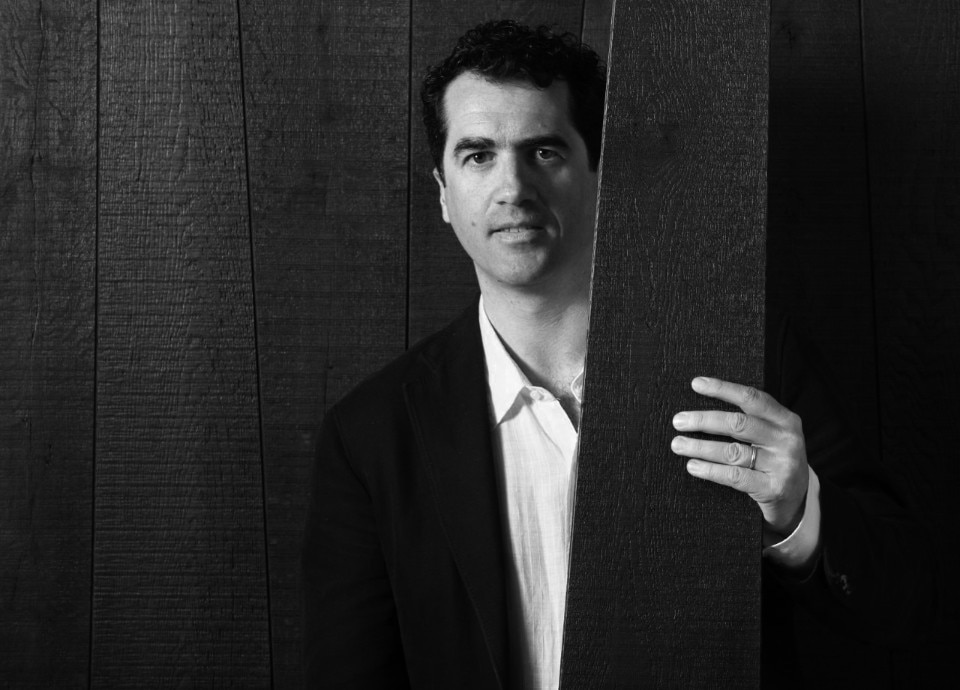“Wood is the primordial material of architecture, a fabulous design of nature. If a man had invented it, he would surely have won the Nobel Prize.” Andrea Margaritelli, President of the Istituto Nazionale di Architettura and Brand Manager of the family brand Listone Giordano, is, first and foremost, a connoisseur of wood, a material that he promotes in Italy and abroad through initiatives spanning art, architecture, and design.
Why do you say wood is architecture’s primordial material?
Few know that the answer to this question is already contained in the etymology of the word legno (wood). In Latin, the word indicating building wood wasn’t lignum, which indicated wood used for less noble purposes, but materia (matter). This means that in Roman times, wood was the material par excellence, the first to rise upwards in the form of trees or buildings, the point of connection between earth and sky, between creativity and the sacred. We must keep in mind that wood was one of mankind’s oldest allies, the material we used to keep warm making fire, and we used to make tools and weapons. I believe that this ancestral heritage is one of the reasons why, although hidden in our primordial memories, we have a feeling of wellbeing when we are in contact with wood.

What are the characteristics that make it so high-performance?
Wood’s brilliant composition is 95% cellulose and lignin. These two components allow it to be the first natural material that can simultaneously resist both compression and tension. To build bridges, to make temple trabeations, or other bent structures using stone instead of wood, man had to invent arches. Even reinforced concrete, which was first introduced at the end of the nineteenth century, is an imitation of the structure of wood: the steel bars correspond to cellulose fibres, and concrete, which is the conglomerate element that acts as a matrix, corresponds to lignin in wood. In short, we can say that reinforced concrete is a human copy of what nature created at the beginning of time. Besides being excellent from a structural point of view, wood also provides insulation, because of its alveolar and ductile structure which has at first an elastic and then a plastic behaviour, so it can dissipate energy, a characteristic that is essential when working in a seismic context. Lastly, unlike what one may think, wood also reacts very well to fire. Despite being more easily inflammable than other materials, it naturally protects its interior, which makes it capable of resisting to fire for a very long time, much longer than a steel beam would do before collapsing. In point of fact, I am convinced there aren’t good or bad materials, it always depends on the function they must respond to. Surely wood has much to offer and would deserve to be known better, starting from the engineering universities where hours and hours are spent talking about steel and concrete, and very little is said about wood: a circumstance that hinders its use.
Why does wood give us a sense of wellbeing?
We would lose the opportunity to understand this material if we analysed it only with the left hemisphere of our brain and from a structural-rational point of view, ignoring our right hemisphere that draws on those ancestral memories I was referring to earlier. Wood is not only about mechanical resistance, high-performance, ductility, and insulation. Wood acts deeply in our soul. Besides creating a physical space, it can create a mental space like few other materials. For me wood is a promise of wellbeing. It does its work well and offers us protection, it resonates with our soul, it reaches the depths of our emotions.

Can architecture be therapeutic?
Donatella Caprioglio, psychologist, psychotherapist, and writer, holder of the only Italian chair of the Psychology of Living Spaces, recognises in a home not only the function of a roof over our heads offering us shelter but also that of walls acting like a shell, a containment, capable of completing some still uncomplete elements of our selves. So architecture may also be therapeutic because it has a social duty: it acts on material to make the humans inhabiting it feel well inside that space. If we recognize that architecture is not only about creating buildings but also about creating the quality of a space for social wellbeing, then we understand that wood is its best ally.”
Can such a primordial material meet the needs of contemporary design?
Wood is also the material of our present because it is absolutely contemporary, over time it has been able to evolve in surprising ways. Think of large laminated-wood entablatures: you can find them in the Sala dei Cinquecento in Palazzo Vecchio, as well as in modern airports and sports halls. Think of thermowoods which represent a contemporary translation of an ancient technique, invented by an Italian Olivetan monk, Giovanni da Verona: by immersing wood in boiling water with salts in an alkaline environment, the wood changes its characteristics, improving its stability and most importantly its durability, making it suitable for outdoor use. Think of Kerto, a very advanced product made with special laminated elements where all the fibre is oriented longitudinally to offer the highest structural performance. But if nowadays airports and stations built in wood are still being designed, it is also due to the fact that this material is considered capable of creating that shell-like environment that can welcome and ‘reassure’ millions of people while they travel far from home and their loved ones.
Can wood also meet the challenges of the future?
Yes, certainly. Scientists confirm it too. According to plant neurobiologist Stefano Mancuso, ‘against global warming there is no more efficient and cheaper technology than trees. We need 1000 billion of them by 2030’.” Mancuso also sends out another important message inviting us to increase our use of wood instead of other materials. If wood is sourced from cultivated trees, hence the result of a sustainable practice based on a cycle of planted, cut, and replanted trees, we can avail ourselves of the only inexhaustible material with zero footprint. A material nature produces with that brilliant formula called photosynthesis that with water and sun, transforms the carbon dioxide in the air into oxygen. And that with the leftover carbon builds its trunk, that for 50% of its weight is carbon. Since the chances of reducing emission levels in the short term are not so high, it is certainly key we find a way to absorb more. By instating guidelines, laws even, that oblige us to plant one tree in the forest for every tree we cut down, we would count on the most powerful ally in the fight against climate change: trees and wood, are materials that fully meet social and environmental responsibilities.

